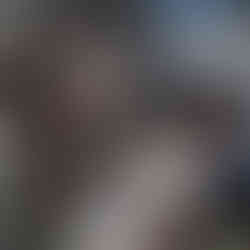Fire Without Smoke: How Indigenous People Used To Make Flammable Spirits In Tripura
- Sarika Debbarma

- May 16, 2021
- 2 min read
Translated from Kokborok by Hamari Jamatia
Till about 30 years ago, a majority of homes in Tripura depended on lamps to see at night. Almost all homes depended heavily on kerosene that was sold at the shop as well as at public distribution system (PDS) centres. However, even before kerosene became available, the indigenous people of Tripura had found a way to distill an alcoholic spirit that lit the homes without creating any smoke.

Today, very few people know the art anymore. So, I was very lucky to meet Manga Laxmi Debbarma of Chailengta who is very knowledgeable about many of our indigeous ways and lifestyle.
She shared the process with us:
Firstly she boiled three kilos of rice and spread it out on a bamboo mat.
After cooling it for two hours, she mixed it with a type of yeast called chuwan. It is made by mixing many herbs found in the forest. But for this spirit, the chuwan was made of rice, garlic, and dried chilies.
After mixing the rice with the yeast, she stored it in a big pot and let it ferment for three days.
On the fourth day, she added some water to the mix and let it ferment for 2 more days.
This fermented rice was used to make a high concentrate of alcohol that could be used to light a lamp. The brewing was done through a system of pots and bamboo called “Baati Bokmaani” where the fermented rice is cooked for a couple of days.
The liquid was then collected through a pipe into a handmade lamp where a wick had been placed.
In total the whole process took about 7-8 days.

The making of chuwan
The concentration, taste, and consistency of the spirit depends on the yeast that is mixed to it. In earlier times, all alcohol was brewed at home be it to light lamps or to drink at functions. The yeast was made from many kinds of leaves found in the forest. The leaves were chopped into smaller pieces and mixed with rice. Here too, different types of rice was used to make different types of chuwan.
The spirit lamp
According to Manga Laxmi, who showed us how to brew the spirit, nowadays not many people make them anymore. She had learnt how to make it when she was a child. She gave a few tips on how to make really effective spirit. Firstly, the yeast has to be of good quality which will help make a concentrate. Secondly, the spirit has to be brewed on low flame for two days. Only then will the liquid be strong enough to be lit.
This article has been created as a part of the Adivasi Awaaz project, with the support of Misereor and Prayog Samaj Sevi Sanstha.










There’s a certain tranquility that comes from sharing a hookah session with good company. It’s not just the act of smoking; it’s the ritual, the communal experience, and the quiet moments of reflection that make it special. Over the years, I’ve seen my fair share of hookah models, from the simple, functional setups to the more extravagant, luxury versions that could double as modern art pieces. Each has its own charm, but what really sets a quality hookah apart is the craftsmanship. A well-made hookah isn’t just about looking good; it’s about performance. A finely-crafted stem, for example, can make all the difference. It’s the difference between a smooth, satisfying draw and one that leaves you coughing up a lung.…
The concentration, taste, and consistency of the spirit depends on the yeast that is mixed to it. In earlier times, all alcohol was brewed at home be it to light lamps or to drink at functions. The yeast was made from many kinds of leaves found in the forest. The leaves were chopped into smaller pieces and mixed with rice. Here too, different types of rice was used to make different types of chuwan.